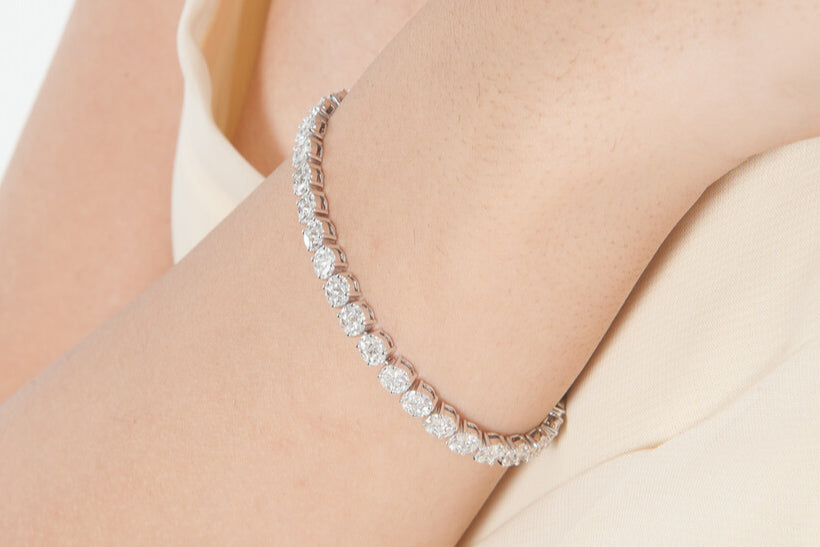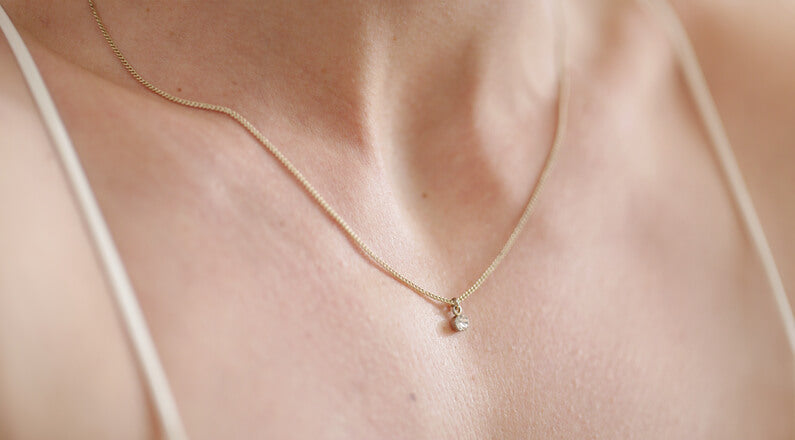How to Tell if Your Moissanite is Real | A Comprehensive Guide
Share
Moissanite is a popular alternative to diamonds because of its striking resemblance to the precious stone, and lower price tag. However, it's important to be able to tell if your moissanite is real or not to avoid being ripped off. In this article, we'll look at the different ways you can tell if your moissanite is real, and the characteristics that set it apart from other gemstones.
What is Moissanite?
Moissanite is a mineral that was first discovered in 1893 by French scientist Henri Moissan. It was found in a meteorite that had crashed in Arizona. Since then, moissanite has been synthesized in laboratories and used as a gemstone. It is composed of silicon carbide and is one of the hardest minerals in existence. It has a refractive index that is higher than that of a diamond, making it even more brilliant than the precious stone.
Differences Between Moissanite and Diamonds
While moissanite and diamonds look similar at first glance, there are several differences between them. One of the main differences is their composition; diamonds are made of pure carbon, while moissanite is made of silicon carbide. Another difference is their hardness; diamonds are the hardest mineral, whereas moissanite is the second hardest. Moissanite also has a higher refractive index, meaning it reflects more light and sparkles more than diamonds.
Physical Characteristics of Moissanite
Moissanite has several physical characteristics that set it apart from other gemstones. It has a high refractive index of 2.65-2.69, which gives it a greater brilliance than diamonds. It also has a high dispersion rate of 0.104, which causes it to display more colorful flashes than diamonds. Moissanite is also very durable, with a hardness of 9.25 on the Mohs scale, making it very difficult to scratch.
Testing Methods for Moissanite
There are several methods you can use to test if your moissanite is real. These include visual inspection, thermal conductivity testing, electrical conductivity testing, refractivity testing, ultraviolet light testing, and magnetism testing.
Visual Inspection
A visual inspection of your moissanite can reveal several clues about its authenticity. Look for any visible scratches, chips, or cracks on the surface of the stone. Moissanite is very durable and difficult to scratch, so if you notice any visible damage, it could be a sign that the stone is not real.
Thermal Conductivity Test
Moissanite has a very high thermal conductivity rate, which means that it conducts heat very well. To perform this test, hold the stone close to your mouth and breathe on it. If the stone fogs up, it's likely a real moissanite, since it conducts heat so well that it will immediately dissipate your breath.
Electrical Conductivity Test
Moissanite is not electrically conductive, so it won't register on an electrical conductivity tester. If the stone is electrically conductive, it's not moissanite.
Refractivity Test
A refractivity test involves shining a light through the stone to see how it refracts, or bends, the light. Moissanite has a very high refractive index, so it will refract the light more than other gemstones. You can also look for a double refraction effect, which is caused by the crystal structure of the stone.
Ultraviolet Light Test
Moissanite will display a yellow or green fluorescence under ultraviolet light. If the stone doesn't fluoresce, it's not moissanite.
Conclusion
Understanding how to identify genuine moissanite is crucial for ensuring that you get the quality and value you expect from your purchase. By conducting a visual inspection, using testing methods, and seeking a professional evaluation, you can confidently determine if your moissanite is real. Whether you're shopping for an engagement ring, a beautiful piece of jewelry, or simply looking to add to your gemstone collection, being able to recognize authentic moissanite will help you make informed decisions and enjoy your stunning, ethical, and affordable gemstone


